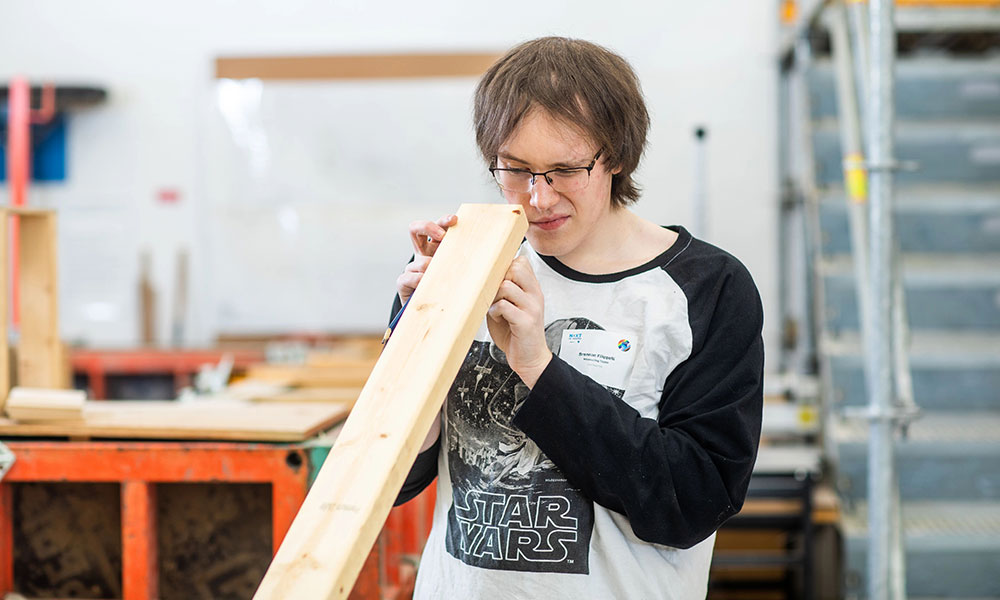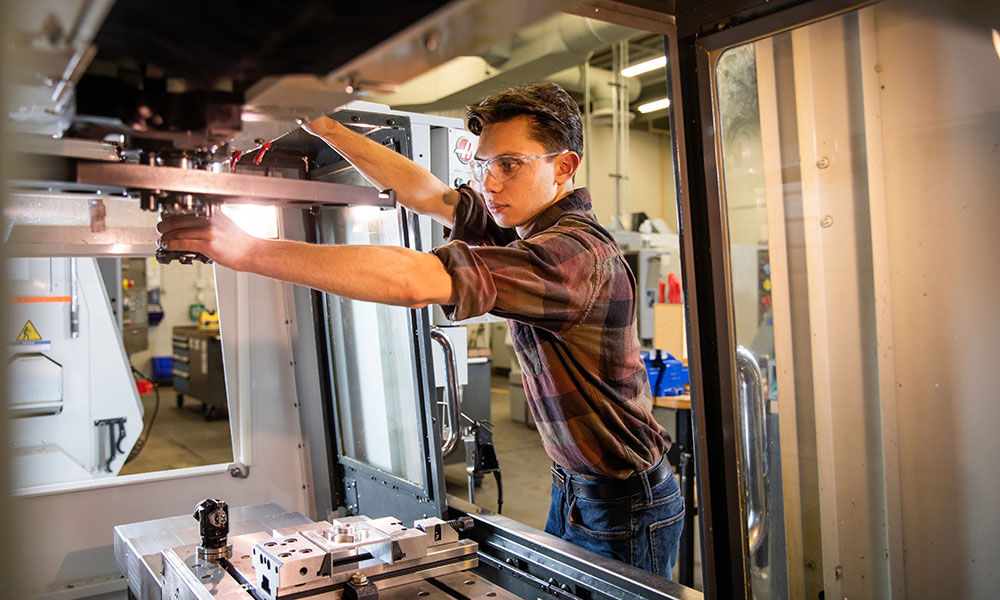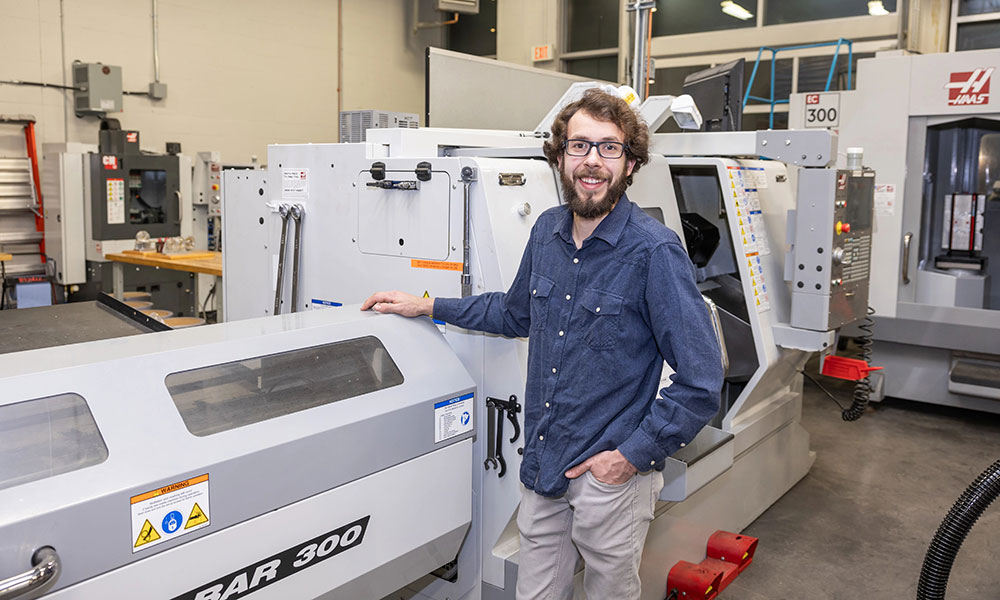Alumnus and trades educator talks about pay, education, inclusion and more
 Resources are the engine of the Alberta economy.
Resources are the engine of the Alberta economy.
The most important among them, however, isn’t necessarily oil and gas – it’s people. Nothing happens, at least not easily, if the educated workforce is too small.
That’s the situation the province now faces. Growth is outpacing peoplepower, and will likely continue as baby boomers retire en masse in the coming years.
It’s bad enough today. In summer 2023, for example, Calgary’s construction industry saw shortfalls of 3,000 to 4,000 staff.
For those looking to the trades for careers, however, that deficit could prove a windfall. But what does it really take for would-be journeypersons to cash in?
Recently, School of Skilled Trades dean Matt Lindberg (Plumber ’01) joined CBC Radio’s Alberta at Noon to field listener questions and respond to comments. Here are some highlights.
Listen to the full episode of Alberta at Noon featuring Matt Lindberg, dean of NAIT’s School of Skilled Trades
The trades need a lot of people

Judging by enrolment, there’s growing interest in trades education, Lindberg said.
Currently, there are 60,000 apprentices registered in Alberta – “that’s a 28% increase in the last year,” he added. “So, huge growth. And we know that we’re going to need it.”
In fact, “a lot of the data that we’re seeing is telling us that it’s still not enough,” said Lindberg.
High school to apprenticeship

Youth rank high among the solutions for an aging workforce. The key is to reach them when they’re thinking about attending post-secondary. Lindberg knows their decisions can be influenced by career councillors, which is why NAIT is ensuring those professionals are positioned to present trades as a viable and appealing option when appropriate.
“I don’t think we’ve completely shifted that conversation to make sure that folks understand the opportunities that a skilled trades career can provide, but we’re making inroads,” said Lindberg.
“We’ve worked hard to help those councillors understand the value and the opportunities that a skilled trades career can provide for their students.”
The courses may be tough, but …

There’s a lot of math and science underlying any trade. Lindberg knows that can sometimes be intimidating for apprentices during their time at NAIT.
“You’re going to school for two months and there is a lot of material covered. It’s not an easy ride,” said Lindberg.
“But [students] are supported along the way by instructors who are caring and who have walked that path and have their journeyperson certifications as well.”
What’s more, a number of trades programs at NAIT are offered in a blended (virtual and onsite) or distance delivery format. This provides for flexibility and can even allow students to extend the time in which to complete the classroom portion of their studies, said Lindberg.
The pay can be worth the effort

Lindberg took a pay cut when he switched from industry to education in the early 2000s. The average wage for a plumber today is $36.91 an hour – slightly higher than pilots, editors, lab technicians and more.
It’s true that payout isn’t immediate, Lindberg noted. It takes time. He acknowledged that apprentices aren’t paid when they’re at NAIT. They are, however, eligible for employment insurance.
As well, “there is an increasing number of employers who are recognizing that apprenticeship education is an investment, not just an expense,” said Lindberg. More and more are offering scholarships, bursaries and entrance awards.
Like any career, progression comes with patience. “You’ve got to keep your eye on that prize,” he added. “You’ve got to stick with it. It does open up different avenues and different doors for you.”
There’s no room for discrimination

The trades has a persisting reputation as a male-dominated profession, pointed out one Alberta at Noon caller, and as not being inclusive of underrepresented groups.
Lindberg didn’t disagree. But he’s optimistic that evolution is underway, and feels that attitudes and practices in the trades are changing.
“I would say that our workplace is not the same as it was 20 years ago,” said Lindberg. “Are we there yet? Is it perfect? No. There's always going to be room for improvement.”
But he sees many employers as determined “to have their workforce truly be reflective of the communities that their organizations are proud to be a part of. They need women. They need newcomers to Canada. They need people from the LGBTQIA+ communities.”
“No one should have to deal with crap when they come to the workplace,” Lindberg added. “So we’re working really hard to change those conversations and make sure that all workplaces are a safe space for everybody.”